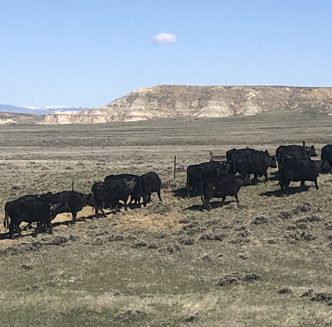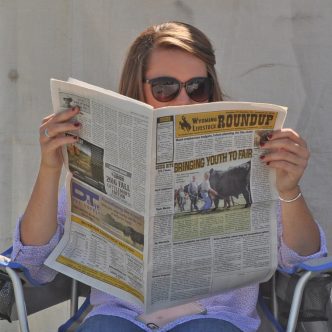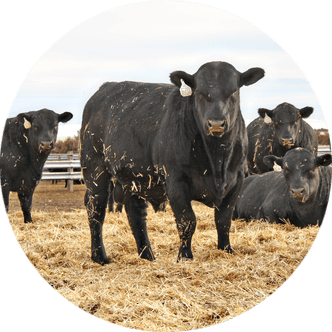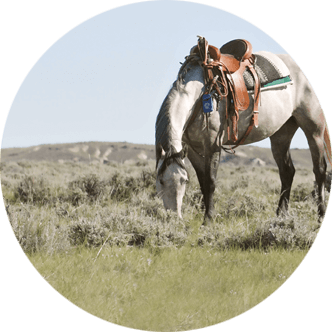Preparing well ahead of breeding season pays off in the long run
To get every broodmare safely in foal, it pays to start preparing both mares and stallions well ahead of the breeding season. This includes an assessment of health, nutrition, body condition and breeding soundness.
By addressing problems early enough, there is a greater chance to correct them.
Teeth should be checked to make sure there are no dental problems.
Regular foot care is important, especially paying close attention to any lameness and soundness issues. If a mare struggles with pain from laminitis, navicular syndrome or other leg and foot injury issues, she may not breed successfully, and lameness problems are likely to get worse when she gains weight during late gestation.
Jean Simmons of Rockin J Bar S Ranch in Phoenix, Ariz. has been breeding American Paint Horses for more than 40 years. She started with Quarter Horses when she was 18, then began breeding paints when they started to become popular.
“It was a good change for me. I was a female trainer who was already breeding horses and handling stallions. I had a hard time showing my Quarter Horses because we had some of the best trainers and the largest circuit shows in the nation here in Arizona,” Simmons says.
“All of these big-name trainers were here, and as a woman trainer trying to compete with them, I realized I had to do something different,” she continues. “I got my foot in the door with this new breed and had a way to make a name for myself.”
Readying mares
Throughout her journey, Simmons has accumulated experience in equine reproduction.
When it comes to readying mares for the breeding season, she notes a mare’s history should be taken into consideration to ensure the best chance of conception.
If the mare was recently retired from an athletic career, she will need adequate “let-down” time to grow accustomed to her lifestyle change.
Factors that could compromise reproductive ability of these mares include athletic injury or drug therapy. If the mare has had anabolic steroids, for instance, it could hinder reproductive performance.
Simmons recommends giving mares several months to get these drugs out of their system before trying to breed.
Additionally, older mares may have fertility problems due to infections from previous foaling or degenerative changes in their reproductive tract. The older the mare and the more foals she has had, the greater the chance for problems.
Simmons says older mares should be carefully monitored and managed to optimize their chances for a successful pregnancy. They may also need hormone therapy to keep them in foal.
Successful breeding goes hand in hand with understanding reproductive cycles, and Simmons urges those involved in the breeding process to track each mare’s cycle and understand their patterns.
“Those who pay attention to their mares are ahead of the game,” she says.
She also notes many of the mares she deals with are artificially inseminated with shipped semen, which is not cheap.
“I tell my clients we only want to do one shipment. This is the goal. We don’t want to have to do it again, so I want the mare ready,” she says. “We usually do a culture and a biopsy if she’s had issues to make sure she’s clean before we breed her. If she’s not, we treat her and get her cleaned up for at least one heat cycle before she gets inseminated.”
“I don’t breed very many shipped semen horses until March and April because the early heats in a lot of mares are transitional and not as fertile,” adds Simmons. “They have a longer, abnormal heat and may not ovulate properly.”
Simmons reiterates, if the mare is to be bred to one of the stallions she’s standing and has a good follicle, she might go ahead and collect the stallion to breed the mare, but if it’s a mare that’s to be bred with shipped semen, she passes her by until she has a better heat cycle later on.
“If the mare isn’t perfect, I won’t call for the semen,” she states. “If she still has a winter hair coat and is not cycling, don’t bring her to me. If she is not shedding her winter hair coat, she’s not cycling. Leave her home and save some money on mare care and breeding expenses. I don’t want to waste time and money on the ones that are not ready to be bred.”
“When you see her in heat, log it into her record and bring her in about two weeks later. When everything is just right, we will call for semen,” she adds.
Simmons also makes sure all mares have their rhino vaccinations ahead of breeding and during pregnancy. She notes vaccinations are now given at three, five, seven and nine months for pregnant mares, instead of waiting five months, as previously recommended.
“I have too much horse traffic here to take any chances. I show horses during the off season and have mares coming in and out every day during breeding season. We started being very aggressive on vaccinating because some people have called and said their mare isn’t pregnant anymore. They don’t even make it to five months,” shares Simmons. “We recommend starting the vaccinations at three months post conception, and so far, all of those mares stay pregnant. It takes too much effort to get mares in foal, so I want to keep them in foal.”
Simmons also notes many of her customers show and compete, and there’s always risk for bringing home a virus. She recommends keeping all horses vaccinated because there are more cases of rhino now all around the country.
Preparing stallions
Likewise, stallions need to be prepared for breeding.
Most young stallions that begin a breeding career have already proven themselves in a show or performance career. If the young horse has done well showing at two and three years of age, for instance, he may begin breeding mares as a four-year-old.
Before starting the breeding season, he will need training on how to behave when breeding a mare, being controlled by his handler or how to mount the dummy or phantom for semen collection.
Additionally, a semen evaluation should be done.
Stallions which have been trained should have a clean-out collection prior to breeding mares.
Simmons notes she puts her open mares and stallions under lights on Dec. 1 to get stallions motivated for breeding season and stimulating mares to cycle earlier. She has also found the use of lights seems to help stallion libido and sperm counts.
Simmons also begins feeding stallions supplements in December, about 60 days before breeding season starts.
“We start increasing their grain ration, and some of them get a supplement called Magnitude which is high in omega fatty acids,” she says. “This seems to boost sperm counts and motility. Stallions need vitamin E and lots of omega-3 fatty acids. We’ve had some fertility issues with a few stallions, but when we put them on these supplements it made a big difference.”
Simmons says she does everything she can to optimize stallion fertility, especially if it’s a horse she’ll be shipping semen from.
“It needs to be really good semen. If it won’t last at least 72 hours, I’m not going to ship it,” she admits. “I test my stallions to make sure their semen will ship. We do a couple trial runs with each of them around the end of January just to see what their semen is looking like – even though we won’t ship any semen until Feb. 10 and see what we might need to correct. We always test different extenders to see which extender is the right one for each stallion.”
Heather Smith Thomas is a corresponding writer for the Wyoming Livestock Roundup. Send comments on this article to roundup@wylr.net.





